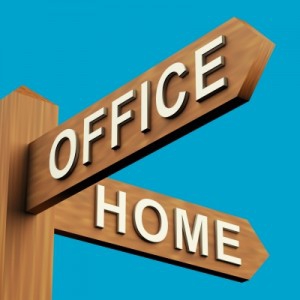The Focus - Our Tax E-Newsletter |
Doing Your Business at Home: Qualifying for the Home Office Deduction

In today’s be connected, stay connected, do-anything-from-anywhere 24/7 society in which we live and work, an increasing number of employers allow their employees to work from the comfortable confines of their own homes. Sole proprietors and self-employed individuals have been doing it for decades. As a result, more and more taxpayers are claiming tax deductions for the business use of their homes. These deductions include mortgage interest, real estate taxes, maintenance, insurance, utilities, and depreciation related to the portion of their home used for business purposes.
The home office deduction has historically been one of those “red flags” the IRS scrutinizes because of the perceived abuses in this area. However, the kinder, gentler IRS is trying to keep up with the times as telecommuting becomes more prevalent. In that regard, in January 2013 the IRS released Revenue Procedure 2013-13 which outlines a “safe harbor” method to calculate the amount of the home office deduction. The safe harbor method is an optional variation that offers a simplified alternative to the “actual expense” method. The IRS made it very clear that this safe harbor method is solely for the mathematical aspects of the deduction. To qualify for either method, the taxpayer must satisfy certain conditions with regards to the area of the home used for business.
In general, in order to deduct any expenses related to the business use of a home, the taxpayer must use the space exclusively and regularly:
- As a principal place of business
- As a place to meet or deal with clients and customers in the normal course of business
- In connection with the business if the space is a separate structure from the residence (such as a detached garage)
The IRS defines a “principal place of business” as one that is used exclusively and regularly by the taxpayer to conduct administrative and management activities of a trade or business and is the only fixed location where the taxpayer conducts substantial administrative and management activities. Activities such as maintaining books and records, billing, payroll, setting up appointments, ordering supplies, among others qualify as administrative and managerial activities. The “only” requirement is the provision which usually, but not always, bars an employee from claiming a home office deduction as the employee also has an office or cubicle at the employer’s location. In addition, employees who work from home must do so for the convenience of the employer, not the employee. In many cases, the convenience factor is determined based on the facts and circumstances.
To satisfy the “exclusively and regularly” conditions, a taxpayer must use a specific area of their home on a continuous basis, rather than occasional basis, and exclusively for the business. Limited exceptions may apply, such as certain daycare facilities or storage of inventory, otherwise, there must be no other use of the space. Generally any non-business or personal use of the area will disqualify the space.
Once the taxpayer determines that the space and usage qualify, they have two methods of calculating the amount of the deduction: the actual expense method or the safe harbor method. Under the actual method, the percentage of their home used for business is determined. The most common approach to doing so is based on square footage. Under this approach the area used for business is divided by the total square footage of the house. A room that is 300 square feet in a 3,000 square foot house would result in ten percent of the house being utilized for business. Another acceptable method is a room-by-room ratio. If the taxpayer’s home has 10 rooms of essentially the same size and one room is used regularly and exclusively for business, the business use percentage would be ten percent.
The taxpayer’s allowable deduction is determined by applying the business use percentage to the allowable expenses (mortgage interest, taxes, utilities, insurance, depreciation, etc.). However, the overall deduction relating to the expenses that would not otherwise be deductible (utilities, maintenance, insurance and depreciation) is subject to a business gross income limitation. Keep in mind that the business portion of the mortgage interest and real estate taxes will still be allowed as an itemized deduction if the home office deduction is limited by the gross income limitation. Any excess expenses are carried over to the next year.
One caution with the actual expense method relates to depreciation. Any depreciation claimed, even if not deducted due to limitations, in connection with a home office must be recaptured if the taxpayer sells the residence.
Under the simplified safe harbor method, the allowable deduction is obtained by multiplying a prescribed rate established by the IRS (currently set at $5.00) by the square footage of the residence that is used for business. The maximum square footage allowed is 300 square feet. Thus the maximum deduction under the safe harbor method is $1,500. Under this method, no amount of the deduction is allocated to depreciation which eliminates the potential recapture issue discussed above.
For both the employee and self-employed individual the home office deduction is computed on Form 8829. The self-employed individual reports the allowable deduction on Schedule C as a reduction of their self-employment income. Employees report the allowable deduction on Schedule A as a miscellaneous itemized deduction with is subject to the 2 percent of adjusted gross income limitation.
Your Dermody, Burke & Brown tax advisor is prepared to help you determine if you are eligible to claim a deduction for the business use of a portion of your home. We encourage you to contact us to discuss this opportunity.
The information reflected in this article was current at the time of publication. This information will not be modified or updated for any subsequent tax law changes, if any.
